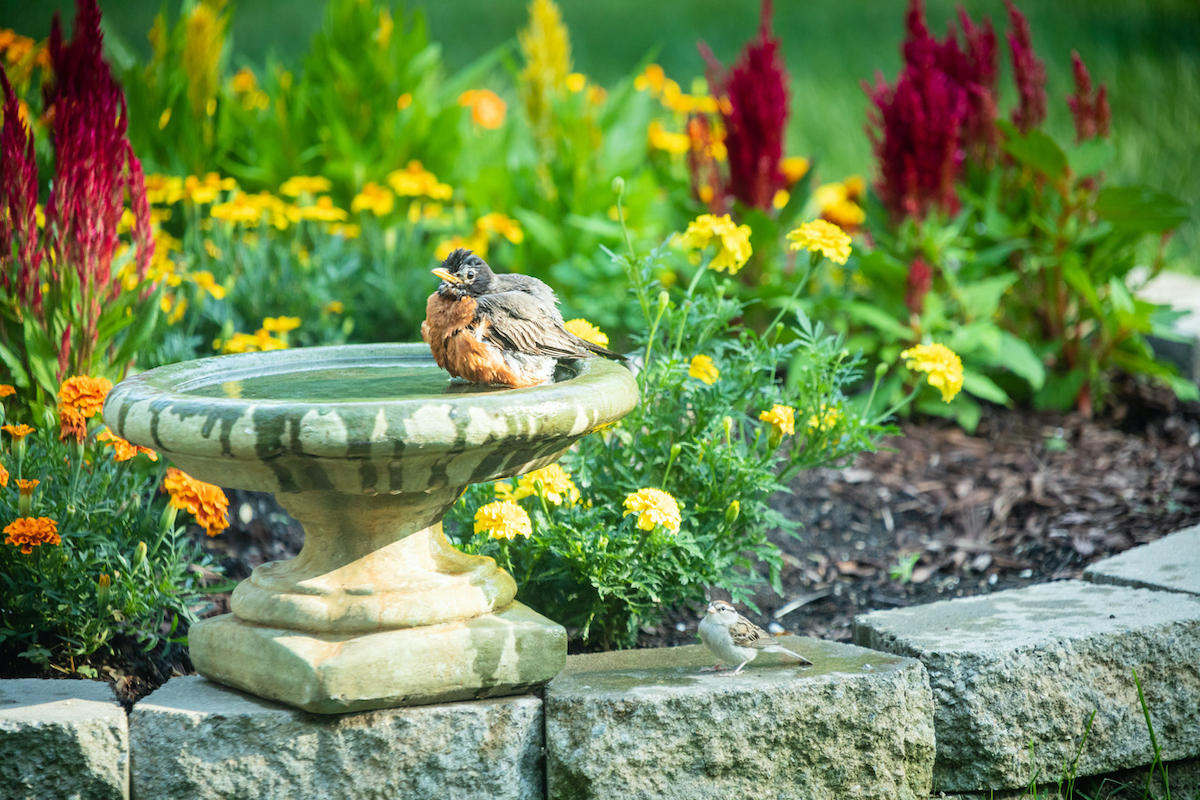

We may earn revenue from the products available on this page and participate in affiliate programs. Learn More ›
It’s almost impossible to imagine what Earth looked like 208 million years ago. For one thing, humans weren’t even a twinkle in the universe’s eye; it would be 206 million years before our hominid ancestors started walking around on their own two feet. Even mammals hadn’t yet evolved—but the insects we know today as earwigs, or pincer bugs, did exist.
Gardeners are generally more interested in how to get rid of earwigs than in learning about their historical origins. Is your garden suffering at the hands—er, pincers—of this pest? Here’s how to get rid of earwigs without resorting to potentially harmful pesticides.
Tools & Materials
Bobvila.com may earn a commission from purchases made through these links.

STEP 1: Start with soap and water.
Clean earwigs from your plants by spritzing them with a homemade concoction of warm water and a few drops of ordinary dishwashing liquid. Pour the mixture into a spray bottle (or fill a bucket with the mixture) and spray or wipe the leaves of your plants. Whether you’re spraying the plants or wiping their leaves with a sudsy rag, this mixture should eradicate any existing earwigs and deter others from munching on your crops.
STEP 2: Roll up the Sunday funnies.
A newspaper, magazine, or supermarket flyer is a cozy hiding place for an earwig. Simply roll an old periodical into a tube, securing it with a piece of tape or rubber band if necessary, and place it in your garden before you retire for the evening. Dampen the newspaper with your hose or watering can to create a particularly tempting trap.
The next morning, gather up your papers and shake them into—you guessed it—that same bucket of dish soap and water. Use the tubes over and over until they no longer harbor the enemy.
RELATED: How to Get Rid of Silverfish
STEP 3: Light up an earwig trap.
Earwigs are mostly active at night. During the day, they bide their time in dark, damp areas; they love to lounge under leaves, firewood, mulch, or other organic material. Vegetation that’s beginning to decay is doubly enticing.
Like other nocturnal creatures, earwigs are attracted to light. To DIY an earwig trap, fill a bucket or dishpan with soapy water, then set up a shop light so that it shines brightly onto the water’s surface.

STEP 4: Try diatomaceous earth.
If you have ever used diatomaceous earth for indoor insect control and have a bag in your backyard shed or basement, good news: Diatomaceous earth will work to wipe out earwigs, too. Sprinkle it around the base of the plants that are tempting these pests. (Be sure to use diatomaceous earth that is food-grade and free of added pesticide.)
Pro tip: Diatomaceous earth loses its effectiveness once it gets wet, so it’s best used in dry climates.
STEP 5: Kill them with condiments.
Whipping up a stir-fry for tonight’s dinner? Make extra for the earwigs. Mix equal parts vegetable oil and soy sauce in a small plastic container, punch holes in the side, and bury it up to just below those holes. The peckish pests are attracted by the salty condiment’s smell and will crawl into the container. Trapped in the oil, they’ll perish before they even have a chance to work up their appetite again.
Equally effective (and even easier) is a tuna-can trap—if you eat tuna packed in oil, that is. Remove the fish but leave the oily remains, then bury the can so that its top is flush with the soil.
RELATED: How to Get Rid of Crickets
STEP 6: Vacuum up earwigs.
Indoors, earwigs tend to gather in cabinets under your kitchen or bathroom sinks, along baseboards, or around houseplants. If you’re wondering how to rid your home of earwigs, look no further than your vacuum. Arm yourself with a fully-charged handheld vac and vacuum them up as you encounter them. The same goes for any clusters of eggs spotted during your search.
Pro tip: Because there’s a good chance that earwigs or their eggs will survive being sucked up by the vacuum, it’s a good idea to empty the vacuum debris canister into soapy water, or discard its contents into a garbage bag and take the bag right out to the trash.

STEP 7: Attract birds to your backyard.
One of the best things about having a backyard is the opportunity to bird-watch. Creating an environment that’s attractive to birds can help control the pest population, too. That’s because insects such as earwigs are tasty, protein-packed snacks for our feathered friends.
Spruce up your yard with bird-friendly amenities such as a The Best Bird Baths, Tested and Reviewed or other water element (especially one with a fountain or mister, because birds flock to moving water), birdhouses, perching sticks, and brightly colored decorative items. (Fun fact: birds are most attracted to objects that have similar colors as their primary prey, but they are also drawn to their own color.)RELATED: How To: Get Rid of Weevils
CLOSING THOUGHTS
Earwigs don’t pose a serious threat to the health and well-being of plants, people, or pets. They are definitely a nuisance, however, and once they have taken up residence in your backyard, it’s not unusual for them to make their way inside the house. Luckily, these pests aren’t particularly difficult to eliminate. Most homeowners can probably do the job with items they already have on hand. Using these all-natural methods to eliminate earwigs will keep your plants looking perfect while also maintaining a safe, pesticide-free environment for your family.
